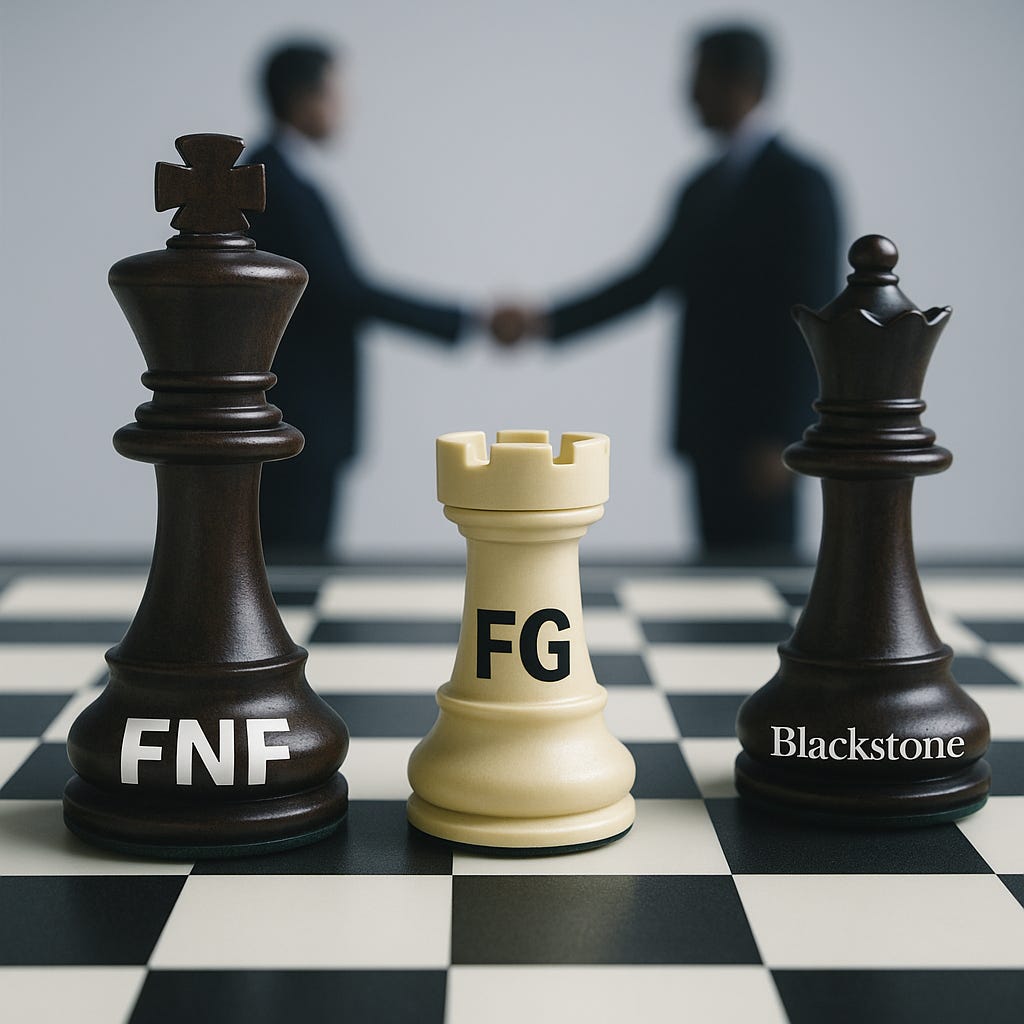Should You Own Fidelity National because F&G Is Likely to Get Acquired?
Fidelity National's (FNF) presentation at the recent Barclays Financial Services Conference has triggered this post. The following dialogue took place on Sep 9 between Barclays analyst Terry Ma and FNF Executive VP & CFO Anthony Park (for those unfamiliar, FNF owns 82.5% of public F&G Annuities & Life (FG)). The emphasis is mine.
Terry Ma
…So I'll be remiss I won't talk about FG. It's been really great for earnings, generating about 30% of FNF-adjusted earnings last few quarters. Maybe just -- it feels like it's going to be a more durable part of the company kind of going forward. So maybe just remind us how FNF views FG and just talk a little bit more about what FG kind of looks like going forward?Anthony Park
…I would say that the Board has been very pleased. I think the thesis behind the acquisition was, let's buy a business with recurring revenue, recurring earnings that we can grow and kind of complement the title business, which is cyclical, and it's really exactly what's happened.We've expanded. We got the ratings upgrade. We've expanded into multiple channels. We've grown our sales from $3-ish billion to $15-ish billion annually. We've grown our assets under management from the mid-20s to close to $60 billion now. And so the performance has been wonderful.
We had maybe a little pushback on the shareholder side of things as they didn't feel like we were getting and agreeably, so we didn't feel like we were getting full valuation of that investment reflected in FNF share price. So we decided to float a small portion of the shares publicly back a couple of years ago. I think that was December of '22 maybe, something like that.
And so anyway, we own 82.5% of the business today, and we do have 18-or-so-ish percent of shares public. And that certainly moved up from where the IPO price was, which was about $19. And so I believe that we're getting some of that valuation reflected in FNF's current share price. Some would argue maybe not all of it, and I think that's fair.
But like I said, the performance is good. The earnings, consistent. The opportunities are still there to grow the assets. They are looking at maybe a slight shift in strategy, which is less capital intensive with signing a $1 billion sidecar with Blackstone and getting some fee income from that.
We have an own distribution strategy where we're getting some fee income there, looking to -- maybe instead of just growing the asset base in all areas, we'll look to be a little more strategic and opportunistic in terms of areas where we might grow that are generating the highest return. So maybe, yes, a long way of saying, I don't know that it's permanent part of FNF. I just don't. I can't answer that question. But I will say it's been a nice complement, a very good investment, and we've been very pleased.
Terry Ma
Got it. Yes, it sounds like it's been performing well. But maybe just kind of remind investors like the date everyone kind of seems focused on was June of '25 is the first date. You could implement or affect a tax-free spin. Like what are kind of some of the factors that you may consider like for that process?Anthony Park
Yes. I mean that's right. We needed to hold it 5 years for tax purposes before we could spin it out to our shareholders tax-free. And so theoretically, we could take that 82.5% ownership that FNF has and spin that to FNF shareholders and it wouldn't be a taxable event. So that is available to us and became available to us in June.Some may expect that we will do that because we've done that type of thing in years past with other investments. And so we know how to do that. We have experience doing that. And I think some people maybe even think we should do that.
Who knows? I don't know if we'll end up doing that. There are other ways to monetize or divest off F&G if we chose to go down that path as well. Maybe not as tax-efficient because it would involve a sale or a merger and potentially a taxable event.
We do feel like we've built up great value here. I think the book value when we bought the company was somewhere in the high $2 billion range, and now it's pushing $6 billion. And so we've really grown the book value, growing the earnings, growing the earnings generation base. And so I think we have a really valuable asset here.
We reviewed the situation with F&G three weeks ago in “The Case of F&G: Spinoff First, Takeover Next”. The title clearly describes our two-step base scenario, with the expected takeover price in the low to mid forties compared with the current $34-35. Anthony Park's comments also introduce the possibility of the direct sale (or merger) of F&G. Two questions become relevant in this regard: Does it make any difference for F&G holders? And does it make sense to hold FNF instead of or in addition to F&G? Some of my readers have already asked the second question explicitly.
What has changed for F&G?
The outlook for F&G has improved further compared to my article three weeks ago. First, comments from Mr. Park suggest that monetization of F&G is under active review within FNF. In earlier earnings calls and conferences, FNF executives repeatedly flagged the possibility of a tax-free spinoff after June 2025. But to the best of my knowledge, they have never mentioned a taxable sale or merger.
Why would they mention it now?


